Vermes
Advanced Member level 4

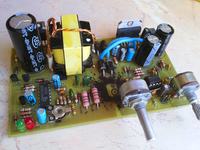
The entire system fits one PCB with dimensions of 75mm x 125mm. It consists of three blocks:
- Pulse converter. This is a copy of a good and proven system AVT2732, with all overload and voltage security. Pulse transformer was taken from 250W AT power supply and it is enough to move the right amount of power for best performance of the tip. 5V primary winding and 12V secondary was used. That gives the gear equal to 2,4. With this gear and supplied voltage 14,5V (with the engine running), there is almost +-33V idle at the output of the converter. After the load with the power amplifier, the voltage is slightly down to a value almost perfect for operation of the power amplifier at impedance 4ohms. Operating frequency of the keys is 50KHz, the core warmed considerably at lower frequencies. The keys do not need cooling when the converter works properly.
- Preamplifier and active filter with adjustable cut-off. The filter is powered by a symmetrical voltage of +12V, taken from the converter output and limited by two Zener diodes 12V.
- Power amplifier. It is TDA7294 system in its typical application. MUTE circuit and the ST-BY made accordingly to the control application one line, here permanently attached to the + power. Two capacitors 1000uF/50V located next to the feet of the tip power are simultaneously output capacitors of the converter. The tip needs of course a substantial heat sink.
Power transformers often have common mass and must be separated for primary and secondary windings – otherwise the mass of the power amplifier and audio input is connected to the positive pole of the battery – which disqualifies the system for use in the car.
Dual potentiometer is linear potentiometer, interchangeably a potentiometer with the 2x22K or 2x47K can be used. In this case, to keep the range of adjustment of the cut-off, filter capacities should be changed to 400nF and 200nF. For 2x10K there are 400nF and 200nF, for 2x22K there are 200nF and 100nF, for 2x47K there are 100nF and 47nF – so that when the resistance is doubled twice – the capacity decreases. Resistors R24 and R25 should also be changed (increase in so far as increasing the potentiometer), but it is not necessary, we will simply have more control up.
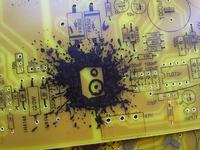
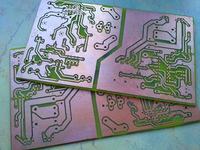
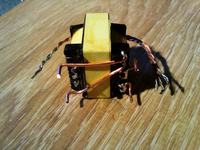
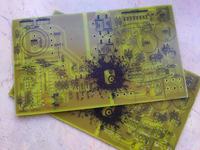

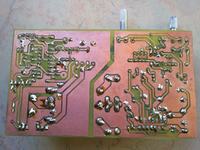
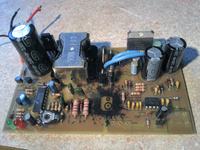
Link to original thread (attachment) – Samochodowy wzmacniacz subwoofera 100W